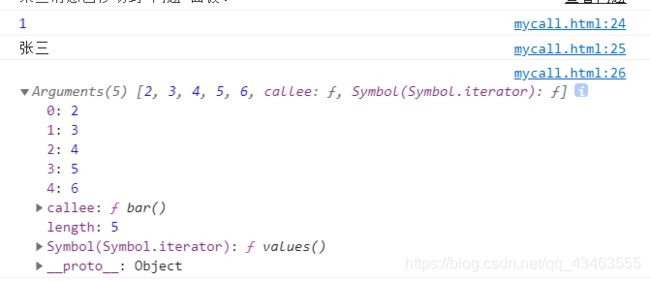前端面经整理二
目录
- BFC是什么
- const、var、let
- 块级作用域
- 自己实现call、apply、bind方法
BFC是什么
BFC:block formatting context(块级格式化上下文)
它是一个独立的渲染区域,只有Block-level box参与, 它规定了内部的Block-level Box如何布局,并且与这个区域外部毫不相干。
<html lang="en">
<head>
<meta charset="UTF-8">
<meta name="viewport" content="width=device-width, initial-scale=1.0">
<meta http-equiv="X-UA-Compatible" content="ie=edge">
<title>清除浮动title>
head>
<style>
.par {
border: 5px solid rgb(91, 243, 30);
width: 300px;
overflow: hidden;
}
.child {
border: 5px solid rgb(233, 250, 84);
width:100px;
height: 100px;
float: left;
}
style>
<body>
<div class="par">
<div class="child">div>
<div class="child">div>
div>
body>
html>
const、var、let
const相当于定义一个常量,不可改变以及重复声明,但是注意的是const定义出来的常量只是指变量的地址不变,所以在定义引用类型的时候可以改变其中的属性,比如:

var具有声明提升的效果,也就是说在执行js上下文的时候会先将变量的声明提前到最上面,并且可以重复声明和定义
let不具有声明提升,可以重复定义,有块作用域
块级作用域
ES5只有全局作用域和函数作用域,ES6的let相当于增加了块级作用域的使用
如:
function f1() {
let n = 5;
if (true) {
let n = 10;
}
console.log(n); // 5
}
在for循环的使用:
for(let i=0;i<5;i++){
setTimeout(()=>{
console.log(i);
})
}
相当于在块作用域里会重复声明i
for(let i=0;i<5;i++){
let i=块作用域的i
setTimeout(()=>{
console.log(i);
})
}
有关函数的使用:
我们知道没有块作用域的时候内层变量会覆盖外层变量
那这样呢:
function f() { console.log('I am outside!'); }
(function () {
if (false) {
// 重复声明一次函数f
function f() { console.log('I am inside!'); }
}
f();
}());
会打印undefined,因为等同于:
在这里插入代码片/ 浏览器的 ES6 环境
function f() { console.log('I am outside!'); }
(function () {
var f = undefined;
if (false) {
function f() { console.log('I am inside!'); }
}
f();
}());
// Uncaught TypeError: f is not a function
自己实现call、apply、bind方法
关于call、apply、bind的使用方法和区别我之前已经整理过一次了,但是面试问让我自己实现的时候还是GG
拿call方法来梳理一下流程:
1.将函数绑定为对象的属性来使用
2.执行一次函数
3.删除这个属性
Function.prototype.mycall=function(context){
if(typeof this!=='function'){
return 'error';
}
context=context||window;
context.fn=this;
let result=null;
let arg=[...arguments].slice(1);
result=context.fn(...arg);
delete context.fn;
return result;
}
function bar(){
console.log(1);
console.log(this.name);
console.log(arguments);
}
let obj={
name:'张三'
};
bar.mycall(obj,2,3,4,5,6);
Function.prototype.myapply=function(context){
if(typeof this!=='function'){
return 'error';
}
context=context||window;
context.fn=this;
let result=null;
let arg=[...arguments].slice(1);
if(arguments[1]){
result=context.fn(...arg);
}
else{
result=context.fn();
}
delete context.fn;
return result;
}
function bar(){
console.log(1);
console.log(this.name);
}
let obj={
name:'张三'
};
bar.myapply(obj,2,3,4,5,6);
bind函数
Function.prototype.mybind=function(){
let self=this;
let context=[].shift.call(arguments);
let arg=[].slice.call(arguments);
return function(){
return self.apply(context,[].concat.call(arg,[].slice.call(arguments)));
}
}
function f(y, z){
return this.x + y + z;
}
var m = f.mybind({x : 1}, 2);
console.log(m(3));
//6
由于arguments是类数组对象而不是数组所以不能直接调用数组的方法
